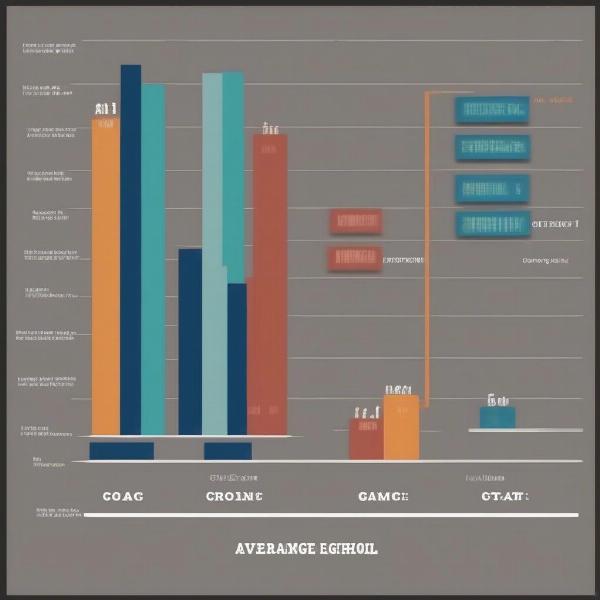A high school football game typically lasts about 2 hours and 30 minutes. However, several factors can influence the actual duration, making it sometimes shorter or longer than the average. Let’s delve into the details of what makes up a high school football game and explore the elements that can affect its runtime. Similar to a professional game, there are four quarters, but the length of each differs slightly. This article will provide you with all the information you need to know about the duration of a high school football game.
Decoding the High School Football Game Clock
A standard high school football game consists of four 12-minute quarters, totaling 48 minutes of regulation play. This is in contrast to professional and college games, which have 15-minute quarters. This shorter quarter length is one of the key differences contributing to a shorter overall game time compared to higher levels of play. However, the clock doesn’t run continuously. There are numerous stoppages throughout the game, making the actual time elapsed significantly longer than the regulated 48 minutes. These stoppages are essential for various reasons, ensuring fair play, player safety, and strategic decision-making.
Common Stoppages in High School Football
Understanding the reasons for clock stoppages is key to grasping why a high school football game lasts longer than just 48 minutes. Here are some common scenarios that lead to the clock stopping:
- Incomplete Passes: When a forward pass hits the ground without being caught, the clock stops.
- Out of Bounds: If a player with the ball steps out of the designated playing area, the clock stops.
- Time Outs: Each team is generally allotted a specific number of timeouts per half, allowing them to briefly halt the game for strategic discussions or player substitutions.
- Penalties: When a rule infraction occurs, the clock usually stops while the penalty is assessed and enforced. This ensures fair play and allows officials to maintain control of the game.
- Scores: After a touchdown, field goal, safety, or successful extra point attempt, the clock stops to allow for the subsequent kickoff.
- Injuries: Player safety is paramount, so the clock stops if a player is injured and requires medical attention on the field.
- Halftime: There’s a designated break between the second and third quarters, typically lasting 15-20 minutes. This break allows players to rest, strategize, and prepare for the second half of the game.
- Official Reviews: In some cases, game officials may review a play using instant replay. While not as frequent as in professional games, these reviews can still cause significant stoppages.
Factors Influencing Game Duration
While the average high school football game lasts around 2.5 hours, this can vary based on several factors:
- Number of Scores: More scoring plays generally lead to more stoppages for kickoffs and celebrations, lengthening the overall game time. High-scoring games often extend beyond the average duration due to the additional time required for these stoppages.
- Penalties: A game with frequent penalties will naturally have more clock stoppages, extending the total game time. Conversely, a clean game with minimal infractions will likely be closer to the average duration.
- Running vs. Passing Game: Teams that rely heavily on running plays tend to keep the clock moving more consistently than teams that primarily pass. Running plays often result in shorter stoppages compared to incomplete passes, which stop the clock.
- Close Scores: Games that are close in score often have more strategic timeouts and potentially overtime periods, adding to the total time. In contrast, games with a significant point difference might see the clock running more continuously in the later stages.
- Overtime: If the score is tied at the end of regulation, overtime periods are played until a winner is determined. Overtime rules vary by state and league but can significantly extend the game’s length.
How Overtime Impacts Game Length
Overtime in high school football often follows a “Kansas Plan” or similar format where each team gets a possession starting at a designated yard line. Each team gets a chance to score, and if the score remains tied after both possessions, subsequent overtime periods may be played. This can dramatically increase the total game length, sometimes by an hour or more. Overtime games are exciting but can significantly impact the schedules of players, coaches, and spectators.
Comparing High School to Other Levels of Football
High school football games are generally shorter than college (3 hours) and professional (3+ hours) games. This difference stems primarily from the shorter quarter length (12 minutes vs. 15 minutes). Shorter quarters, combined with fewer commercial breaks (which are common in professional and college broadcasts), contribute to a quicker pace and shorter overall duration for high school games. While the core rules are similar, these variations in game length create distinct experiences at different levels of football. You can find more information about the length of 7v7 football games on our blog post: how long is a 7v7 football game.
 Comparison of Football Game Lengths at Different Levels
Comparison of Football Game Lengths at Different Levels
Attending a High School Football Game: What to Expect
Knowing the average game length helps you plan your Friday night effectively. While 2.5 hours is a good estimate, factor in potential delays due to weather, overtime, or unforeseen circumstances. Arrive early to find parking and get settled in before kickoff. Dress comfortably and consider bringing snacks and drinks, especially if the game is expected to run long.
Planning Your Time Around the Game
Understanding that a high school football game can last anywhere from 2 hours to well over 3 hours is crucial for planning. Consider travel time to and from the stadium, especially if you have other commitments after the game. Bringing a blanket or cushion for seating can enhance your comfort, especially during longer games.
 High School Football Fans Enjoying the Game
High School Football Fans Enjoying the Game
Conclusion
So, How Long Does An Average High School Football Game Last? Approximately 2 hours and 30 minutes. However, various factors, including scoring frequency, penalties, game style, and overtime, can influence the actual duration. Understanding these factors allows for better planning and ensures you can enjoy the full experience of Friday night lights without rushing. While high school games are generally shorter than college or professional games, they offer a unique blend of competition, community, and excitement. Remember to plan your time accordingly and enjoy the game!
FAQs
- Are high school football quarters the same length as NFL games? No, high school football quarters are 12 minutes long, while NFL quarters are 15 minutes.
- What happens if a high school football game is tied after regulation? Overtime periods are played until a winner is determined, following specific overtime rules.
- Why do high school football games have shorter quarters? Shorter quarters are intended to accommodate younger players and potentially mitigate the risk of injuries.
- What is the longest a high school football game can last? Theoretically, a game could last several hours if multiple overtime periods are required.
- What is the shortest a high school football game can last? While unlikely, a game with minimal stoppages and a running clock could potentially finish in under two hours.
- Do all states have the same overtime rules for high school football? No, overtime rules can vary by state and sometimes even by league or conference.
- Is there a halftime in high school football games? Yes, there is typically a 15-20 minute halftime break between the second and third quarters.

